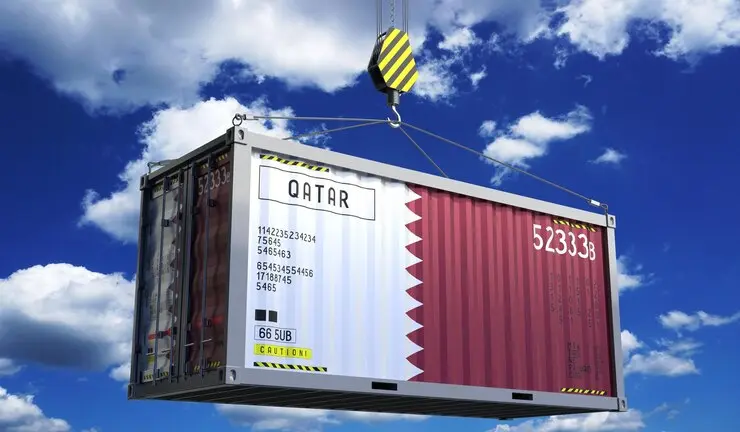
Qatar is setting a global benchmark in infrastructure development, transforming itself into a transportation and logistics powerhouse. The nation’s $70 billion investment in building a world-class transportation system is a testament to its ambition to become a hub for trade and commerce in the Gulf. But how does this rapid infrastructure growth impact freight needs? Let’s dive in and explore Qatar’s progress, its freight demands, and the role of reliable cargo services like Al Weam, known as the best Dubai to Qatar cargo service.
Why Qatar Is Investing in Infrastructure?
Qatar’s infrastructure boom isn’t just about new roads and fancy stadiums; it’s about building the foundation for a sustainable, diversified economy. Under the Qatar National Vision 2030, the country is focused on economic, social, human, and environmental development.
Key highlights include:
- Expressway Programme: Over 900 km of roads and 240 interchanges are being constructed to improve connectivity and reduce congestionation Master Plan for Qatar 2050 (TMPQ 2050)**: Includes 37 road and 30 public transit projects, prioritizing low-emission transportation and sustainability .
- Doha Metail Tram: Qatar has built one of the region’s fastest rail networks, while the Lusail Tram is set to become the GCC’s longest tramway
These projects highlis commitment to seamless transportation, but they also create unique opportunities and challenges in freight and logistics.
The Ripple Effect on Freight Needs
With infrastructure growth comes a spike in demand for efficient freight services. Here’s why:
- Increased Construction Activity: Projects like the Qatar-Bahrain Causeway (a 40-km multimodal link) and the Lusail Expressway have created massive logistical requirements for materials, machinery, and workforce transportation .
- Expanding Trade Networkss and the integration of the GCC Railway (once completed) will make Qatar a key transit point for goods moving across the Gulf .
- E-commerce and Cold Chain Logistics Growth logistics sector aims to achieve a 6.6% compound annual growth rate by 2030, supported by investments in e-commerce and pharmaceutical re-exports .
This growth means freight providers need to deliver faste, and more environmentally friendly solutions to keep up.
Challenges in Freight Management
While Qatar’s infrastructure developments are exciting, they’re not without hurdles.
- Logistics Bottlenecks: Rapid urbanization and construction can lead to supply chain inefficiencies. Material shortages and workforce management issues are common challenges .
- Sustainability Pressures: With Qatar focusing on reducing csions, freight providers must align with eco-friendly practices, such as adopting electric vehicles and optimizing delivery routes
- Timeline Constraints: The ambitious timelines for projects like the Cup preparations highlighted the need for streamlined freight operations .
Al Weam: Your Trusted Partner for Dubai-to-Qatar Cargo
When it comes toallenges, Al Weam stands out as the best Dubai-to-Qatar road cargo service company. With years of expertise, Al Weam ensures:
- Fast and Reliable Deliveries: From construction materials to e-commerce goods, Al Weam’s optimized routes guarantee timely freight services.
- Sustainability-Focused Solutions: Al Weam is committed to reducing its environmental footprint, aligning with Qatar’s Vision 2030.
- End-to-End Support: Whether you need to transport perishable goods or heavy machinery, Al Weam’s comprehensive solutions cater to diverse freight needs.
FIFA World Cup 2022: A Turning Point
The 2022 FIFA World Cup was a litmus test for Qatar’s infrastructure. It showcased the country’s logistical capabilities, with highlights including:
- 17.4 Million Trips on Doha Metro: Efficient public transport reduced traffic congestion during the tournament .
- Hamad Port and Hamad International Airport: Ranked among the world’s best for performance and effandling millions of passengers and tons of freight .
The success of these systems underscored Qatar’s readiness to handle complex freight demands, further solidifyiition as a logistics leader.
Future Prospects: What’s Next for Freight?
Qatar’s ambitious plans don’t stop at the World Cup. The Third National Development Strategy (NDS-3) emphasizes:
- Expanding re-exports to QR24 billion ($6.6 billion) by 2030.
- Developing cold chain logistics for pharmaceuticals and e-commerce .
- Establishing policies for low-emission freight transportation.
As these goals unfold, freight companies like **Al integral role in ensuring seamless cargo movement.
Why Freight Providers Need to Adapt
Qatar’s focus on intelligent transport systems (ITS) is a game-changer. Features like incident detection, automated toll systems, and dynamic message signs are improving road safety and efficiency .
Freight providers must leverage these advancements by:
- Investing in smart fleet management systems.
- Adopting eco-friendly transpor
- Collaborating with government initiatives to streamline operations.
Conclusion
Qatar’s rapid infrastructure development is reshaping the country’s freight landscape, creating both opportunities and challenges. With its ambitious vision, Qatar is well on its way to becoming a global transportation and logistics leader.
Being the best freight forwarding company in Dubai for businesses seeking reliable cargo solutions, Al Weam remains the top choice for Dubai-to-Qatar road freight services. Whether it’s construction materials, e-commerce goods, or specialized cargo, Al Weam’s commitment to efficiency and sustainability ensures your goods reach their destination on time, every time.
As Qatar continues its journey toward modernization, the synergy between infrastructure and logistics will pave the way for long-term growth, benefiting businesses and residents alike.
Sources
- ITS International: Qatar Invests $70 Billion to Build World-Class Transportation Infrastructure
- The Oxford Business Group: Transforming Qatar for a Global Audience.
- The World Folio: FIFA World Cup Infrastructure as a Legacy.
